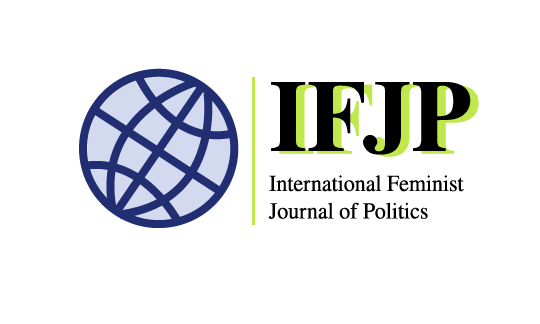Who and Where are Russian Women Soldiers?
By: JONNA ALAVA (she/her/hers)
More than 62,000 Ukrainian women soldiers are currently fighting against Russia. They are increasingly attaining combat and officer positions, gradually shifting away from traditional "women’s duties" in medical or headquarters roles. Female soldiers have been prominent in the media, due both to the increasing presence of women in the military and the communication strategy of the Ukrainian Ministry of Defense. Either way, the visibility prompts the question: where are the women on the Russian side? My analysis of representations of Russian women soldiers from 2008 to 2021 explores their invisibility in greater detail.
On the surface, the integration of women into the Russian army has appeared to align with Western standards of gender equality, although the number of women soldiers has halved to 40 000 over the 20 years, currently comprising approximately 4.26 percent of the total active duty forces. However, celebratory speeches proclaiming that women can achieve any position in the Russian army are often exaggerated and rooted in tokenism. President Putin himself has stated that when women desire positions such as fighter pilots, ‘specialists should be consulted.’ The primary value of women soldiers is tied to their role in motherhood, which prevents them from participating in combat missions. This gendered contract is culturally legitimized through the symbol of Rodina Mat’ (‘the Motherland’/’Mother Russia’).
In Russia, since ancient times, a woman has embodied not only a mother but also such a sacred concept as ‘Rodina-mat’.’ For centuries, they raised their children as true patriots and loyal defenders of their country and inspired men to feats of arms in the name of freedom and independence of the Fatherland (Serdyukov 2008)
Rodina Mat.
Rodina Mat’ is a symbol and anthropomorphism used by both Russia and the Soviet Union, most famously represented by the colossal statues in Volgograd and Kyiv. It possesses significant mobilization potential, acting as a feminized guardian of the unified nation, urging citizens to sacrifice themselves. Contemporary women soldiers are linked to Rodina Mat’ not only through direct comparisons but also through their emphasized roles as mothers and wives. The Russian Armed Forces newspaper, ‘Red Star,’ rarely mentions women soldiers without referencing their children and husbands. Rodina Mat' serves not just as a model for female soldiers but represents an ideal of militarized femininity in Russia. It offers a role model for women on how to approach the war—from the home front, by supporting their fighting men and brothers and the regime, and by giving birth to new soldiers.
While Rodina Mat’ serves as a hegemonic archetype, in their actual military roles, women soldiers are often depicted as handmaidens, which can be considered an aspect of Rodina Mat’. This portrayal is subservient, nurturing, and sexually attractive, complementing a male counterpart and serving in nonviolent capacities. For example, yearly beauty contests in the Russian military highlight how women's sexual appearance and ‘natural’ nurturing qualities are considered assets, believed to positively influence the mental fighting ability of the entire army by fostering a good atmosphere and boosting male morale. Sexual harassment is not far removed from this representation, and as recent reports indicate, Russian women soldiers serving in the current war have often ended up as ‘field wives.’
There are two additional representations of Russian women soldiers that have yet to emerge in this war. Modern, professional, and emancipated women warriors are not uncommon in the Russian military, but their narratives remain marginalized. This marginalization prevents them from challenging the narrow, male-centered official memorial culture and the notion of this being a men’s war. Similarly, as women are currently depicted more as objects of protection rather than self-sacrificing fighters, the propaganda machine cannot utilize portrayals of women martyrs—dying female soldiers—to mobilize the entire nation, as it did during the Great Patriotic War.
Tying Russian women soldiers—and, more broadly, all Russian women—to the archetype of Rodina-Mat’ serves a dual purpose. On one hand, it supports the Kremlin’s justification for the war as a defense against "degenerate" Western values. On the other, it reinforces so-called “traditional values,” instrumentalized to address Russia’s demographic decline. However, the deepening militarization of society, with its rigid and unequal gender roles, is a strategic vulnerability. By marginalizing women, the societal cohesion is undermined—gradually eroding public support for the war. At the same time, loosening these entrenched gender roles poses a risk for the Kremlin as well, since it could lead to broader demands for equality and threaten the legitimacy of the current power structure. This gender order—the path Russia has chosen—may help sustain the war effort in the short term, but it is ultimately unsustainable and creates strategic space for a more egalitarian Ukraine to maneuver.
Read the full article here: Mothers of Russia: portrayals of Russian women soldiers between 2008 and 2021
Each blog post gives the views of the individual author(s) based on their published IFJP article. All posts published on ifjpglobal.org remain the intellectual property and copyright of the author or authors.
Jonna Alava is a doctoral researcher at the University of Helsinki and a member of the Russia Research Group at the Finnish National Defence University since August 2019. Her article-based dissertation examines military-patriotic education and its gendered aspects in Russia.



